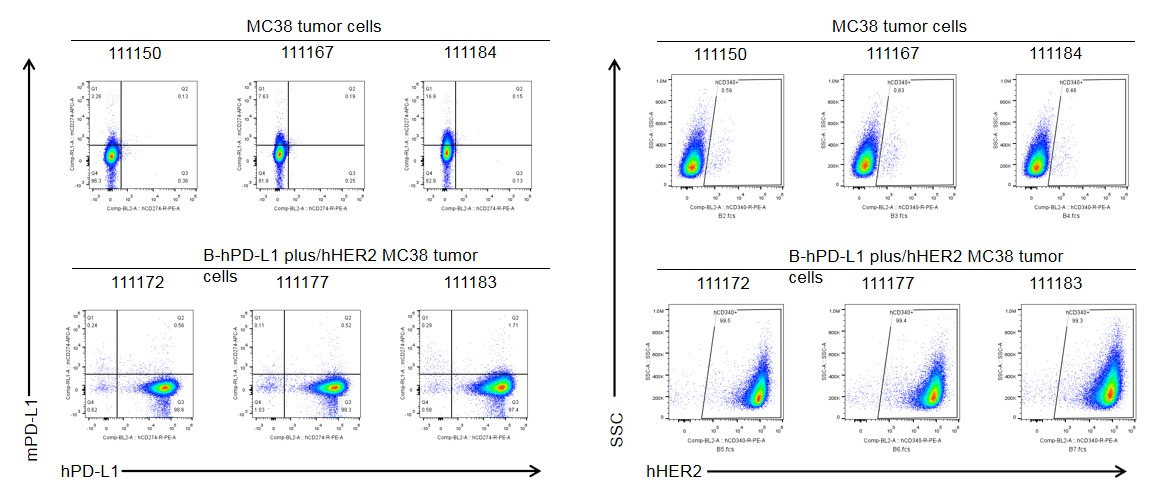|
Common name |
B-hPD-L1 plus/hHER2 MC38 | Catalog number | 321917 |
| Aliases |
CD274, B7-H, B7H1, PD-L1, PDCD1L1, PDCD1LG1, PDL1, hPD-L1, CD274 molecule,Programmed cell death 1 ligand 1; ERBB2, CD340, HER-2, HER-2/neu, HER2, MLN 19, NEU, NGL, TKR1, VSCN2, c-ERB-2, c-ERB2, erb-b2 receptor tyrosine kinase 2 |
Disease | Colon carcinoma |
|
Organism |
Mouse |
Strain | C57BL/6 |
| Tissue types | Colon | Tissue | Colon |
The exogenous promoter and human PD-L1 coding sequence was inserted to replace part of murine exon 3. The insertion disrupts the endogenous murine Pdl1 gene, resulting in a non-functional transcript.
The exogenous CAG promoter and human ERBB2 coding sequence was inserted to replace part of murine exon 2 and all of exons 3-7. The insertion disrupts the endogenous murine Erbb2 gene, resulting in a non-functional transcript.
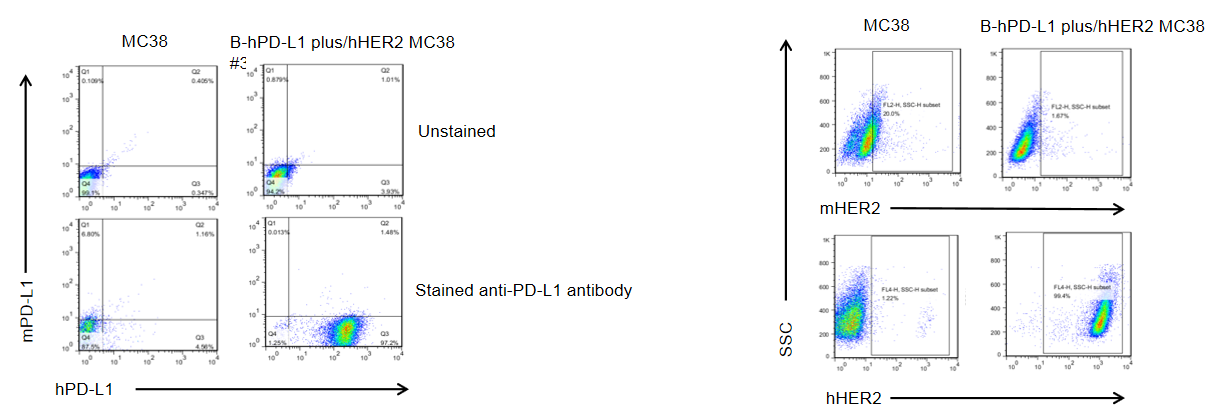
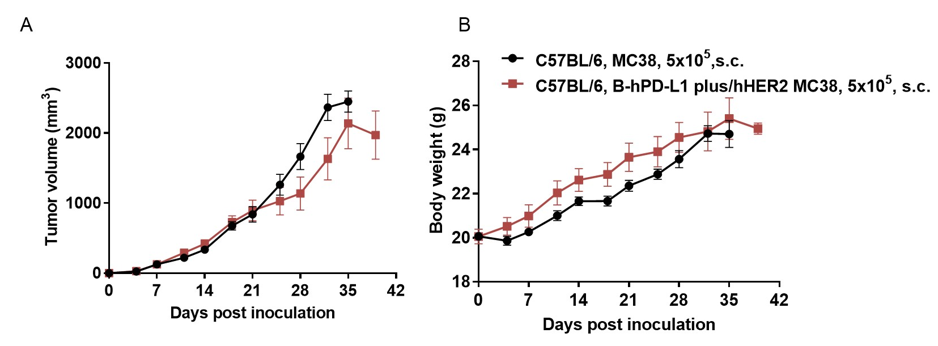
Subcutaneous homograft tumor growth of B-hPD-L1 plus/hHER2 MC38 cells. B-hPD-L1 plus/hHER2 MC38 cells (5x105) and wild-type MC38 cells (5x105) were subcutaneously implanted into C57BL/6 mice (female, 9-week-old, n=6). Tumor volume and body weight were measured twice a week. (A) Average tumor volume ± SEM. (B) Body weight (Mean ± SEM). Volume was expressed in mm3 using the formula: V=0.5 X long diameter X short diameter2. As shown in panel A, B-hPD-L1 plus/hHER2 MC38 cells were able to form tumors in vivo and can be used for efficacy studies.
Tumor growth curve of individual mice
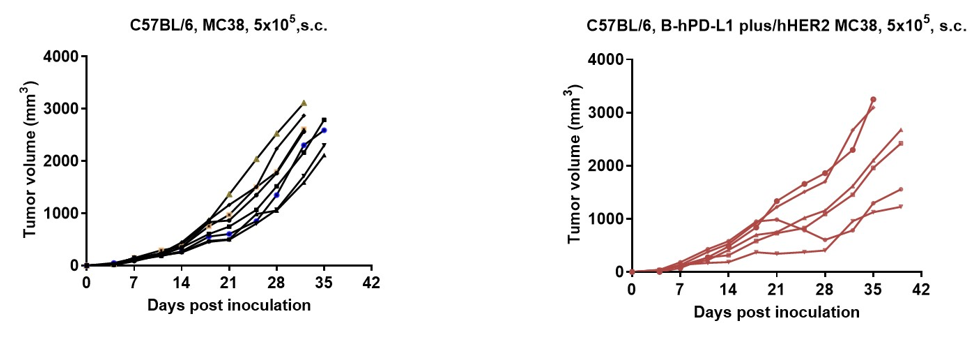
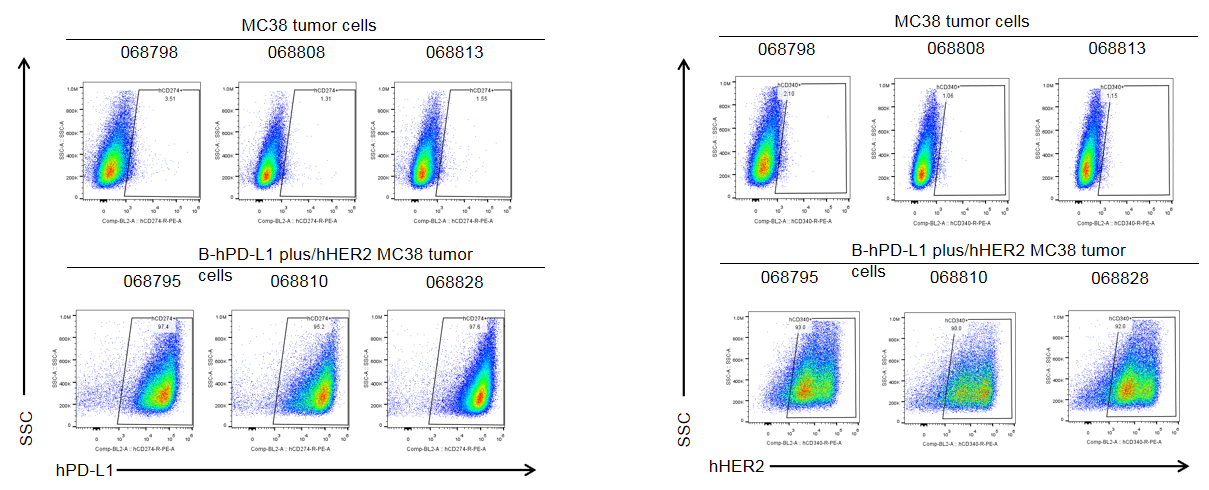
Tumor growth curve & Body weight changes
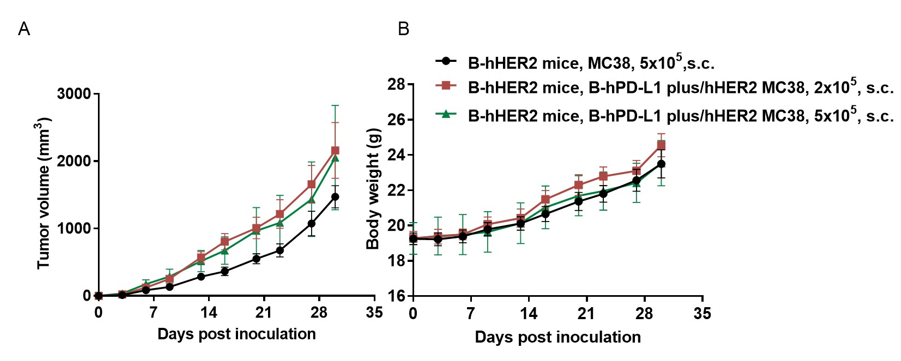
Subcutaneous homograft tumor growth of B-hPD-L1 plus/hHER2 MC38 cells. B-hPD-L1 plus/hHER2 MC38 cells (2x105, 5x105) and wild-type MC38 cells (5x105) were subcutaneously implanted into homozygous B-hHER2 mice (female, 5-week-old, n=6). Tumor volume and body weight were measured twice a week. (A) Average tumor volume ± SEM. (B) Body weight (Mean ± SEM). Volume was expressed in mm3 using the formula: V=0.5 X long diameter X short diameter2. As shown in panel A, B-hPD-L1 plus/hHER2 MC38 cells were able to form tumors in vivo and can be used for efficacy studies.

B-hPD-L1 plus/hHER2 MC38 MC38 tumor cells growth of individual mice. B-hPD-L1 plus/hHER2 MC38 cells (2x105, 5x105) and wild-type MC38 cells (5x105) were subcutaneously implanted into homozygous B-hHER2 mice (female, 5-week-old, n=6). As shown in panel, B-hPD-L1 plus/hHER2 MC38 MC38 cells were able to establish tumors in vivo and can be used for efficacy studies.

Protein expression analysis of tumor cells
